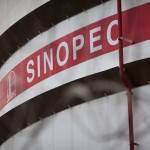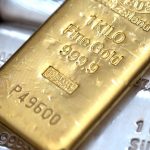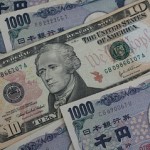Copper rose to the highest in a week on broad expectations the Federal Reserve will refrain from scaling back its bond purchases after FOMCs two-day meeting concludes later today. An expansion of Japans industrial sector and some upbeat data from the Euro zone also supported the metals demand prospects.
On the Comex division of the New York Mercantile Exchange, copper futures for settlement in December traded at $3.309 per pound at 10:11 GMT, up 0.95% on the day. Prices surged to a session high of $3.318, the strongest level since October 23, while days low was touched at $3.273 a pound. The industrial metal added 0.3% on Tuesday and extended its weekly advance to over 1.2% on Wednesday.
Copper extended gains on Wednesday as market players wagered that policy makers will keep the quantitative easing program intact after the conclusion of FOMCs two-day meeting, leaving liquidity ample and pressuring down the U.S. dollar. Despite the minor manufacturing expansion in the U.S. in September, which raised concern over the metals demand prospects, other overall downbeat data added to speculations the Federal Reserve will defer decelerating its monetary stimulus until 2014. According to a Bloomberg survey of 40 analysts conducted on October 17-18, the Fed will begin scaling back its bond purchases in March.
Joyce Liu, an investment analyst at Phillip Futures Singapore, commented for CNBC: “Continued availability of liquidity would likely mean more funds for investment in metals and low interest rates makes financing through metals an attractive option. Keeping the current rate of asset purchases also suggests the dollar may remain pressured going forward, making dollar-denominated LME metals attractive and giving Chinese players more incentive to import.”
The U.S. dollar index, which measures the greenbacks performance against a basket of six major peers, traded at 79.61 at 10:12 GMT, down 0.09% on the day. The December contract held in a narrow range between 79.76 and 79.59 and trimmed its weekly advance to 0.4%. Weakening of the U.S. dollar makes dollar-denominated commodities cheaper for foreign currency holders and boosts their appeal as an alternative investment.
The industrial metal also drew support after stockpiles monitored by the London Mercantile Exchange fell for a 39th session in a row, the longest such streak since July 2009.
Data earlier in the day showed that Japans industrial production picked up in September, despite slightly underperforming expectations. On monthly basis, the Asian nations industrial output rose by 1.5% following a 0.9% contraction in August. Analysts expected a 1.8% advance. Year-on-year, production expanded by 5.4% last month, compared to projections for a 5.6% advance, but marked a major improvement compared to Augusts 0.4% contraction. In Australia, the Housing Industry Association reported that new homes sales rose by 6.4% last month, outperforming Augusts 3.4% advance.
In the Euro zone, Germanys unemployment rate remained flat, as expected, at 6.9% in October, while unemployment in Norway in the third quarter fell to 3.5%, beating projections to remain unchanged at 3.6%.
Meanwhile, Spains state statistics agency INE said that the countrys economy grew by 0.1% in the third quarter after contracting for nine straight quarters, officially ending a two-year recession. The 0.1% GDP growth rate confirmed a report by Bank of Spain released last week.





